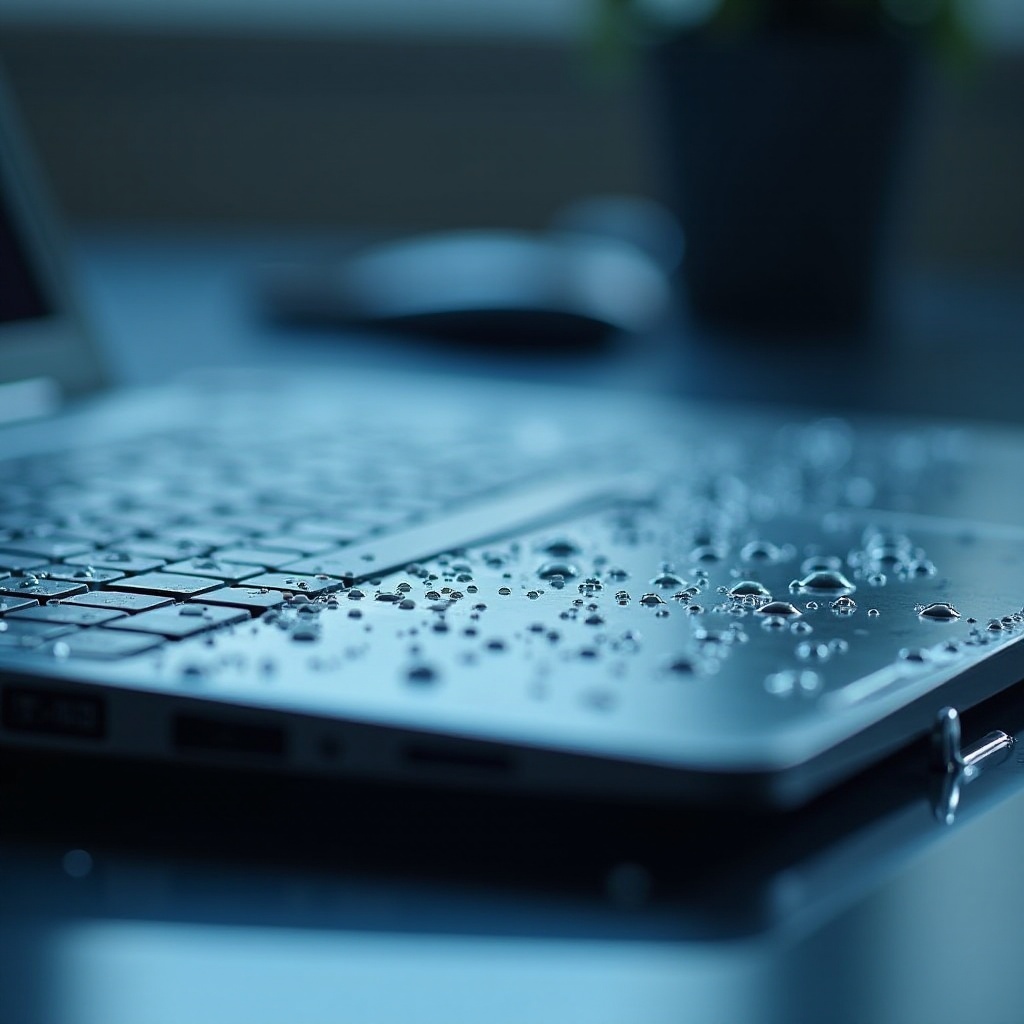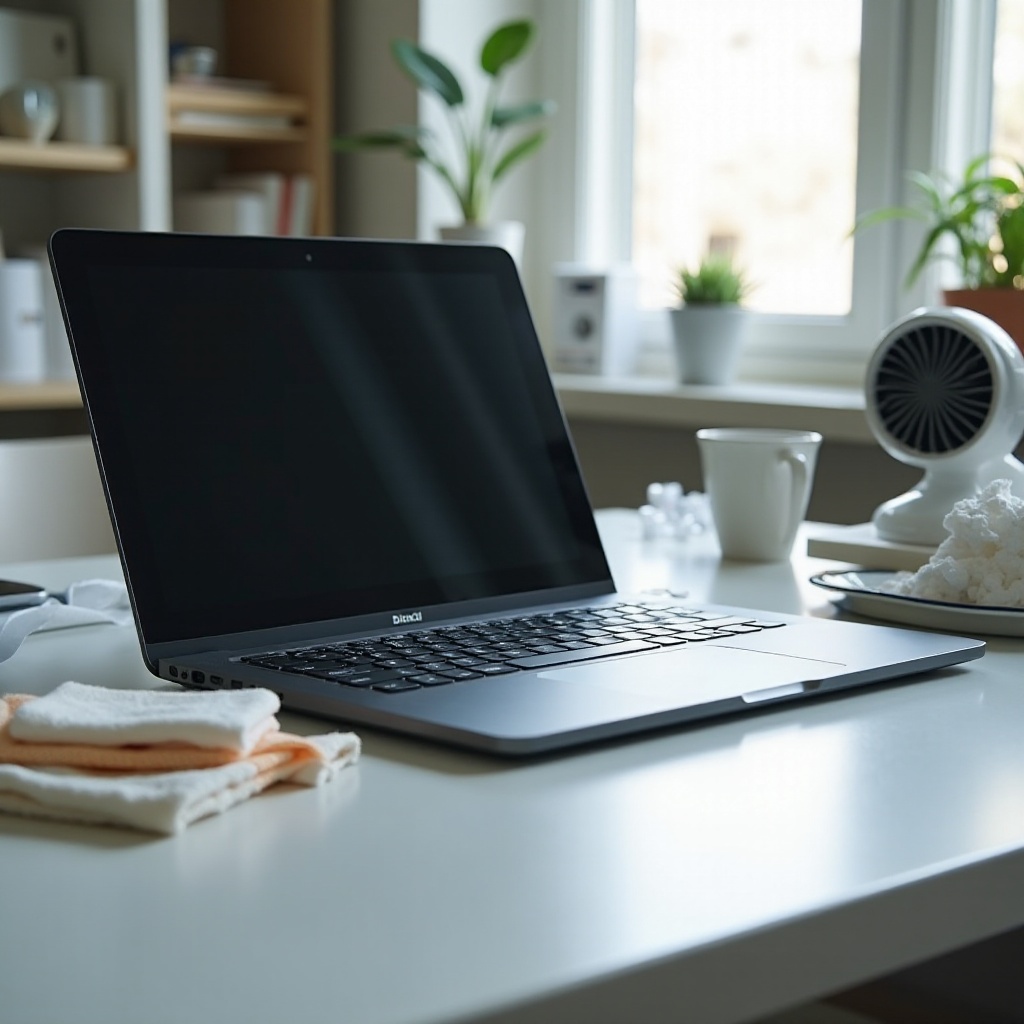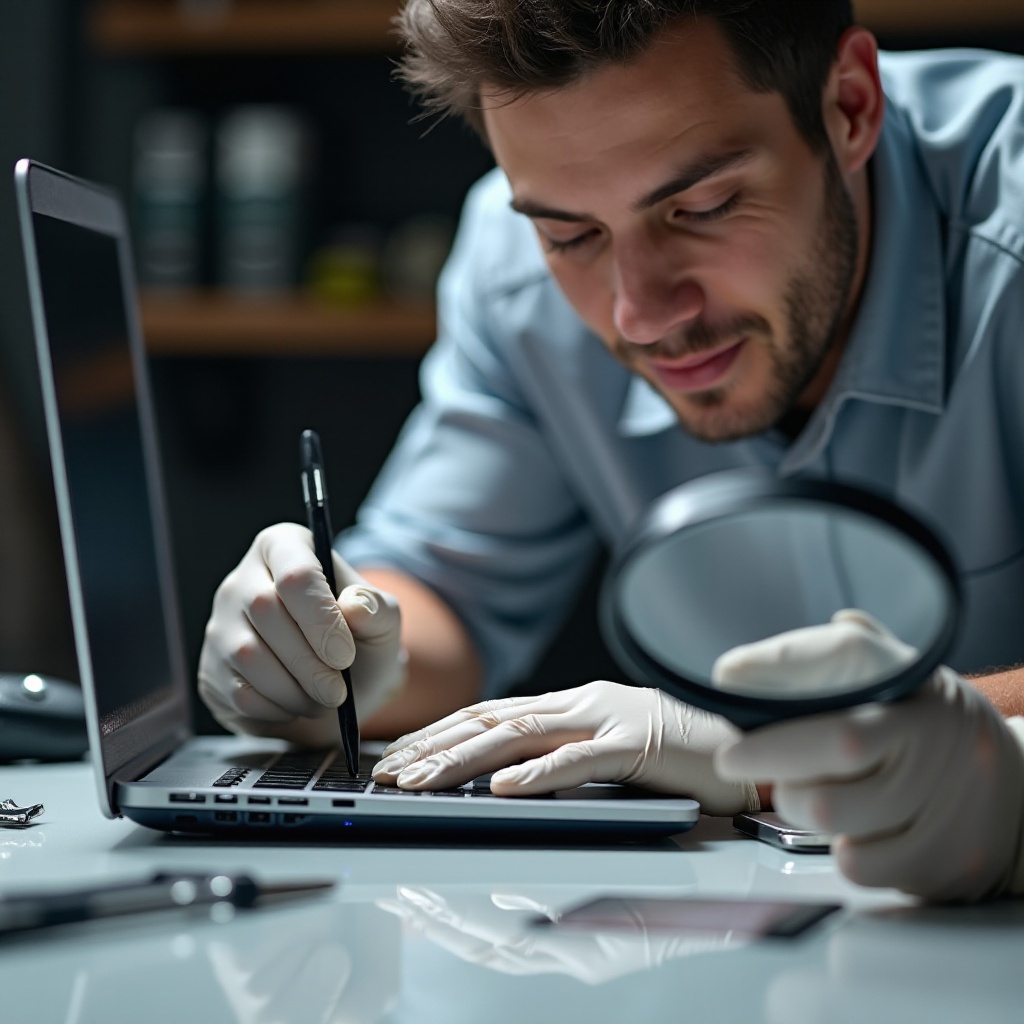Recover Your Wet Laptop That Won’t Turn On: A Step-by-Step Guide
Introduction
Spilling liquid on your laptop can be a distressing incident, especially if it doesn’t turn back on afterward. Prompt and efficient action can minimize damage and even save your device. Knowing the right steps to take is key in such situations. Many users have managed to rescue their laptops after liquid spills, and with this guide, you can join them. We will cover everything from immediate actions to dry a wet laptop, inspecting for damage, and preventing future accidents.

Immediate Actions When Your Laptop Gets Wet
When every second counts, swift action can be the difference between a quick fix and irreversible damage. Start by immediately turning off your laptop. If the device is still operational, press and hold the power button to shut it down quickly. Disconnect the power cable along with any peripherals like a mouse or USB drives. If accessible, remove the battery to cut off power, preventing short circuits instantly.
Set your laptop on a dry, absorbent surface with the keyboard facing downward. This position effectively facilitates the drainage of liquid, reducing potential internal damage. Refrain from attempting to power on your laptop at this stage. Doing so could compound issues and make recovery more challenging.
Safe Drying Techniques for Your Wet Laptop
Extracting moisture from your laptop safely is crucial to avoid additional harm. Here’s a step-by-step guide:
Using Absorbent Materials
-
Blot for Blotting: Utilize a lint-free cloth or paper towel to gently absorb visible liquid. Concentrate on the keyboard and screen, handling the device with care to avoid pressing moisture further inside.
-
Silica Gel Packets: Place several silica gel packets strategically around your laptop. Unlike rice, silica packets absorb moisture effectively without leaving behind messes or debris.
Air-Drying Best Practices
-
Optimal Air-Dry: Position the laptop in a well-ventilated, warm, and dry place. Ensure good airflow around it. You can set it up in a tent-like configuration or upside down on a towel.
-
Steer Clear of Heat Sources: Do not use a hair dryer or direct heat source. Excessive heat can cause permanent deformation of sensitive components.

Inspecting Damage and Troubleshooting
Once you believe the laptop is devoid of internal moisture, it’s time to assess it for damage and start troubleshooting.
Visual Inspection of Components
-
Inspect Internals: If you’re comfortable, cautiously open the laptop casing to check for water residue or corrosion, especially around the motherboard and connectors.
-
Examine Battery and Ports: Assess these areas for any lingering moisture. Use a cotton swab lightly moistened with isopropyl alcohol to remove persistent residue safely.
Functional Testing
-
Battery Reinstallation: Reconnect the battery and attempt to turn on the laptop while it’s plugged in. If it fails, remove the battery and test again using just the power supply.
-
Component Function Check: If successful, assess the keyboard, trackpad, and ports to ensure all components are working optimally.

Professional Repairs for Water Damage
Should your troubleshooting attempts be unsuccessful, seeking professional repair services is a sensible next step. A technician can comprehensively inspect your laptop and determine the extent of repairability. They may employ specialized techniques such as ultrasonic cleaning, which is beyond the capability of typical users.
Entrusting your laptop to a qualified professional mitigates potential risks and avoids unnecessary expenditure due to improper repair or diagnostic errors.
Preventing Future Water Damage
Reducing the risk of future spills necessitates proactive measures designed to protect your device from liquid exposure.
Protective Accessories
-
Waterproof Covers and Sleeves: Investing in high-quality waterproof protectors can offer vital protection during commutes or outings.
-
Keyboard Protectors: Durable keyboard covers act as barriers against liquid spills, stopping them from reaching internal circuits.
Safe Usage Practices
-
Dedicated Beverage Areas: Keep drinks away from your workspace. Designate a spot specifically for beverages distant from electronic components.
-
Awareness and Habitual Safety: Cultivate an awareness of your surroundings and develop habits such as closing the laptop lid when stepping away to minimize risk.
Conclusion
A wet laptop poses a significant challenge, but proper initial actions can swing the odds in favor of recovery. By ensuring correct drying and careful inspection for damage, you may restore its functionality. Should these efforts prove inadequate, professional assistance can offer a viable solution. Learn from this experience by applying preventive measures to safeguard against future incidents.
Frequently Asked Questions
Can a water-damaged laptop be repaired?
Yes, many water-damaged laptops can be repaired, particularly if addressed quickly. Avoid turning on the device until it is completely dried and examined.
How long should I let my laptop dry before turning it on?
Allow your laptop to dry for at least 48 hours. This ensures thorough evaporation of internal moisture, reducing short-circuit risks.
What should I avoid doing if my laptop gets wet?
Do not turn it on prematurely, use a hair dryer for drying, or plug it in. These actions can cause severe damage. Opt for gentle drying and ample natural evaporation time.
